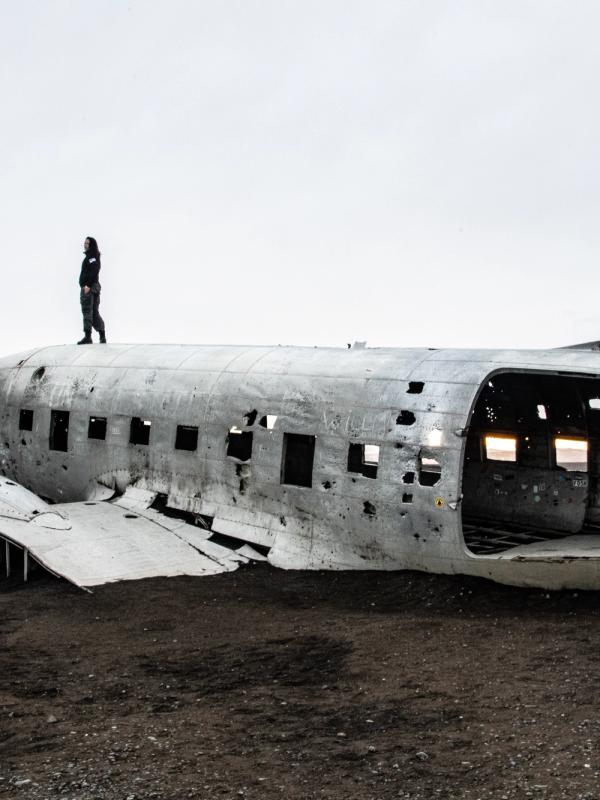
The Solheimasandur Plane Wreck: Iceland's Haunting Black Sand Beach Landmark
Did you know there's an old US Navy aircraft sitting on a black-sand beach in southern Iceland? The Solheimasandur Plane Wreck has gone from a forgotten crash site to a top spot for travelers looking for incredible sights and great photos.
Here's what you need to know before your visit.
Key Takeaways
- It’s an old Douglas C-117D airplane that crash-landed in 1973, with everyone surviving
- Located on Iceland's South Coast between Skógafoss and Vík
- You can hike 4 km each way or take a shuttle bus to get there
- No fee to see the plane, just a parking fee of about 750 ISK ($6)
- Summer is easier for access, but worth seeing any time of year
- Weather can get bad – dress right
- Easy to combine with other South Coast sights
What is the Solheimasandur Plane Wreck?
The Solheimasandur Plane Wreck is the shell of a U.S. Navy Douglas C-117D airplane that made an emergency landing on Iceland's South Coast in 1973. The empty shell sits on a vast black sand beach, creating a strange scene that's now one of Iceland's most photographed spots. Despite years of harsh weather, the main body is still intact enough for visitors to walk inside and around it.
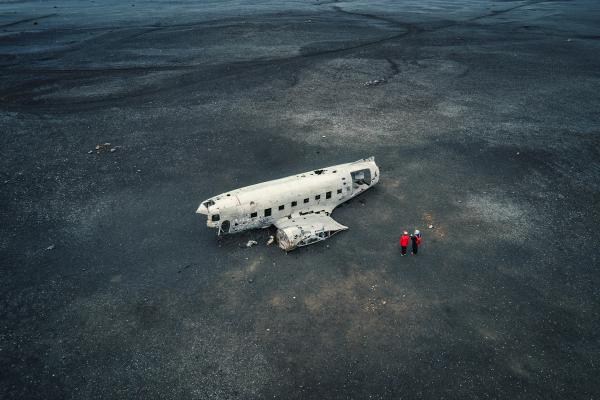
The Full History of the Accident
On November 21, 1973, this Douglas C-117D airplane (a variant of the DC-3) was flying from a radar station in eastern Iceland back to Keflavík Naval Air Station when it got into trouble.
The plane encountered bad weather: temperatures dropped to -10°C (14°F), winds hit 96 km/h (60 mph), and ice built up on the carburetors. Both engines stopped working, forcing pilot Captain James Wicke and co-pilot Lieutenant Gregory Fletcher to make an emergency landing on what they thought was a frozen river, but was actually the black sand beach.
The plane slid about 27 meters (90 feet) before stopping, reportedly, just 6 meters (20 feet) from the Atlantic Ocean. All seven crew members survived without injuries. The Icelandic Coast Guard sent a rescue helicopter, and local farmers came on tractors through a snowstorm to help.
After the crash, teams recovered the valuable parts, including the wings, engines, and cockpit gear. The empty shell was left behind because it was not worth the cost of moving from such a far-off spot. It sat mostly forgotten until Iceland's tourism boom after the 2010 Eyjafjallajökull eruption made it famous.
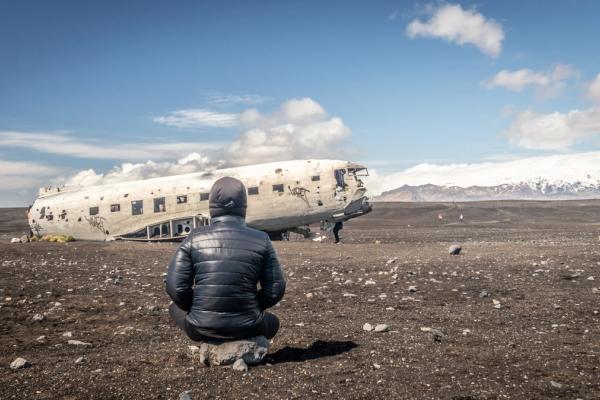
Why is the Solheimasandur Plane Wreck Famous?
The wreck got famous through social media and videos. It showed up in music videos, including Justin Bieber's "I'll Show You" (2015), which brought many more visitors. Its stark setting – a silver airplane shell against endless black sand – creates a scene that looks like the end of the world, which photographers and Instagram users love.
The contrast between the plane and the wild Icelandic landscape makes a powerful image. The site has become a symbol of nature's strength and human survival, drawing travelers looking for something different from popular tourist spots.
Location and How to Get There
The plane wreck sits on the black sand plains of Solheimasandur on Iceland's South Coast. It's about 164 km (102 miles) east of Reykjavík and 23.1 km (14.3 miles) west of the town of Vík í Mýrdal, just off the Ring Road (Route 1).
Look for a small parking lot at coordinates 63.490734, -19.364180. This lot is about 10 km (6.2 miles) east of Skógafoss waterfall, near the Sólheimajökull glacier. Parking costs around 750 ISK ($6) and is payable via the Parka app or online.
From the parking area, you have two options to reach the wreck:
The Hike
The hike to the wreck is about 4 km (2.5 mi) each way over flat but open ground. Yellow stakes mark the path, which is easy to follow when you can see well. Plan for 40-60 minutes each way at a normal pace.
The ground is flat but can be tough due to loose rocks, sand, and being open to the weather. There are no shelters or bathrooms between the parking lot and the plane.
The path itself isn't exciting; in fact, many find it boring, but the destination makes up for it. Walking across the big black sand desert is part of the trip. You won't see the plane until you're close, as it sits behind a small hill.
The Shuttle Bus
If you don't want to walk, shuttle buses run from the parking lot. The ride takes only 10-15 minutes and costs around 3,200 ISK ($26) one-way, with lower prices for kids and teens.
Shuttles run daily between about 10:00 and 17:00, with times varying with the daylight hours. You can book tickets online or at the site through companies like Arcanum or Mountain Guides.
This option is really helpful in winter when hiking can be risky, or if you're short on time and want to see more of the South Coast.
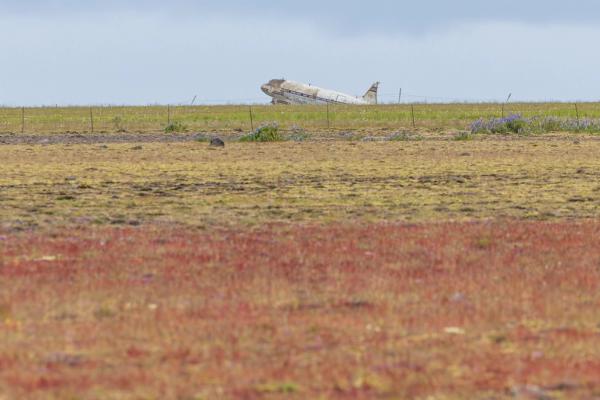
Things to Do There
Once you reach the wreck, here's what you can do:
Explore the shell
You can walk inside the empty shell of what was once a military plane. The inside frames photos in cool ways, with black sand visible through holes in the metal.
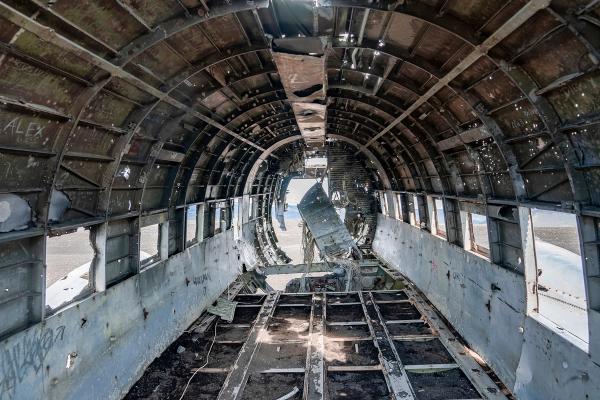
Take photos
The site offers excellent photo opportunities. The metal plane against the black sand makes for striking images, especially at sunrise, sunset, or under the moody Icelandic skies. The wreck looks different depending on the weather: sunlight makes the metal shine, while fog creates a spooky mood.
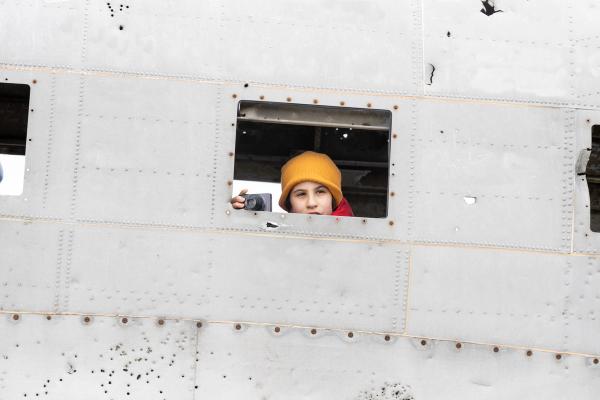
Walk to the ocean
From the wreck, it's a short 500-meter walk to the Atlantic shore. This helps you see how close the plane came to landing in the sea and gives you another view of the landscape.
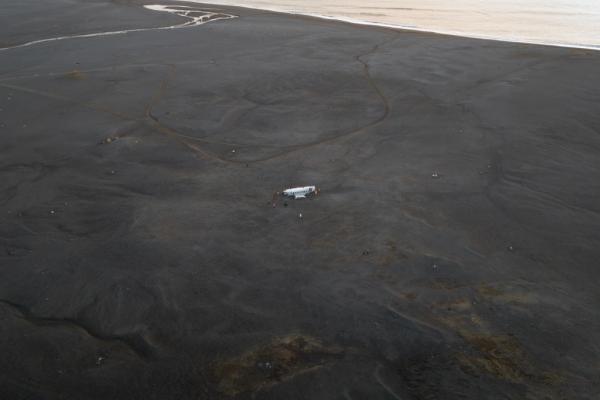
Fly a drone
Drones are usually allowed (weather and Icelandic rules permitting). Shots from above show the wreck against the vast black sand beach, and can look amazing.
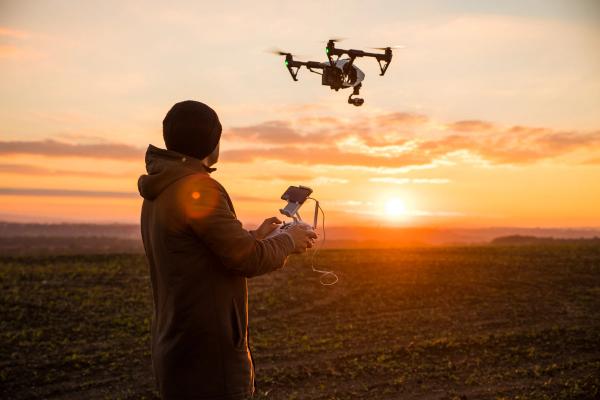
Useful Information for Visitors
- The site has no facilities: no toilets, no food stands, no shelter, and no trash cans. The nearest facilities are at Skógafoss (10 km west) or Vík (27 km east). Use toilets before arriving and take all your trash with you.
- Cell phone coverage is usually good, but don't count on it in an emergency. The path can be confusing when visibility is poor, so download offline maps before your visit.
- For safety, never visit alone during winter or in bad weather. Tell someone your plans and when you expect to return. If visibility drops or winds pick up, turn back right away; several tourists have gotten lost or frozen here.
- Photos look best at sunrise or sunset when the light creates cool shadows and colors. If visiting for photography, arrive at least an hour before sunset or after sunrise to catch the best light while having enough time to get back safely.
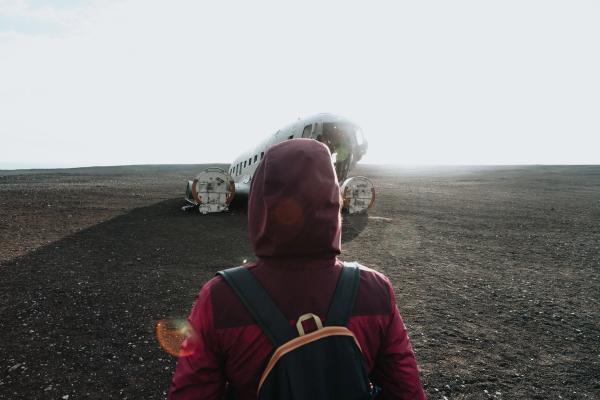
Weather
Iceland's South Coast is known for harsh, fast-changing weather. The Solheimasandur plain has no shelter from wind, rain, or snow. Weather that seems fine at the parking lot can become dangerous on the open plain.
Wind is common in Solheimasandur, often strong enough to make walking difficult and create sandstorms that reduce visibility. Fog can roll in quickly from the ocean, making an easy hike confusing.
Always check weather reports on sites like vedur.is before starting out. If the weather gets worse during your visit, don't wait to turn back. People have died from exposure near the site in 2017 and 2020, showing the real dangers of Iceland's weather.
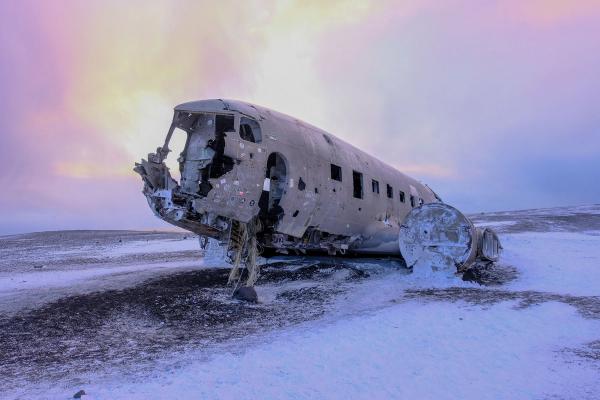
Best Time to Visit
You can visit year-round, but each season offers different experiences:
- Summer (June-August): Best option for most visitors. Long daylight (almost 24 hours in June) gives you more time to explore. The weather is milder, though still changing, with temperatures usually between 10 and 15°C (50 and 59°F). The path is easier to follow, and shuttles run more often.
- Spring/Fall (April-May, September-October): Fewer crowds but more unpredictable weather. Daylight hours are good, and you might get dramatic skies for photography. Shuttles may run less often.
- Winter (November-March): The hardest time to visit, but maybe the most rewarding for photographers. Daylight lasts only 4-6 hours, and snow may cover the path, making it hard to find your way. The wreck against snow-covered black sand creates striking black-and-white images, and you might even see the Northern Lights over the plane. Shuttles run when weather allows, and guided tours become more necessary.
For time of day, early morning or late afternoon usually offers the best light for photos and fewer people. In high season, try to arrive before 10 AM or after 5 PM to avoid the busiest times.
What to Bring
Good preparation is key for a safe, comfortable visit:
- Clothing: Dress in layers with waterproof and windproof outer layers. Even in summer, wind can make it feel much colder. Waterproof hiking boots are best, along with hats, gloves, and scarves (even in summer).
- Navigation: While the path is usually well-marked, having offline maps or a GPS device with saved coordinates helps, especially when visibility is poor. Cell phone reception is generally available, but shouldn't be your only option.
- Supplies: Bring water and snacks, as there are no services at the site. A flashlight or headlamp is a must for visits near sunrise or sunset, especially outside the summer.
- Photography gear: Protect your camera from sand and rain. A lens cloth, rain cover, and camera bag are useful. If you’re bringing a drone, remember the area is often windy, which can affect flight control and battery life.
- Safety items: A small first-aid kit and an emergency blanket take up little space but could be vital in an emergency. Make sure your phone is fully charged, and consider bringing a power bank.
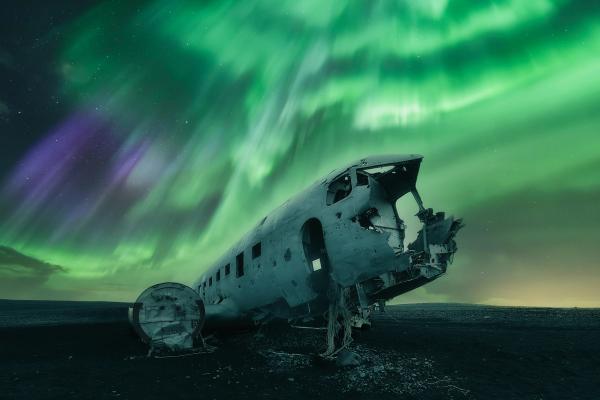
Things to Do & Places to Visit Nearby
The plane wreck sits on Iceland's South Coast, which has many natural wonders within easy driving distance:
Skógafoss Waterfall
Just 10 km (6 mi) west of the plane wreck parking lot, this 60-meter waterfall creates rainbows on sunny days and has a path to the top for more expansive views of the surroundings. This is probably my favorite waterfall in the whole country.
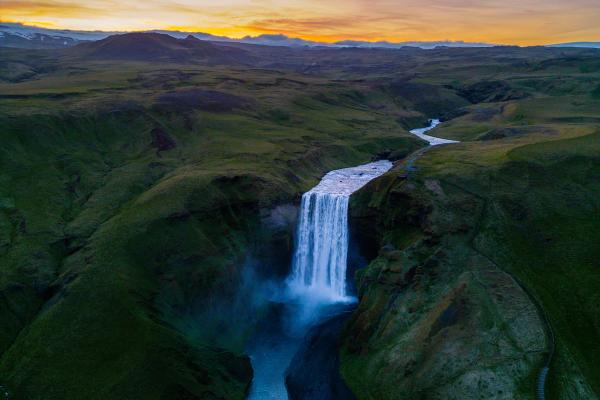
Kvernufoss Waterfall
A hidden gem near Skógafoss, this waterfall requires a short hike and offers a quieter experience than its famous neighbor. It’s one of the few falls where you can walk behind it.
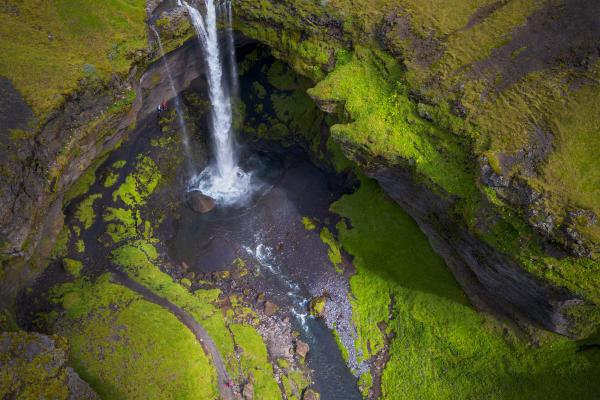
Sólheimajökull Glacier
Very close to the plane wreck, this glacier tongue extends from the Mýrdalsjökull ice cap and offers guided glacier hikes for those wanting to walk on ancient ice. Here or somewhere else, a glacier hike is a must-do in Iceland.
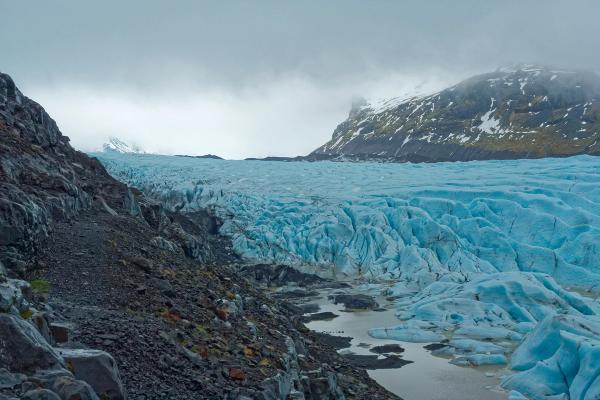
Reynisfjara Beach
About 30 km (19 mi) east of the plane wreck, this is the most famous black sand beach in Iceland, with dramatic rock columns and sea stacks. Watch out for dangerous sneaker waves.
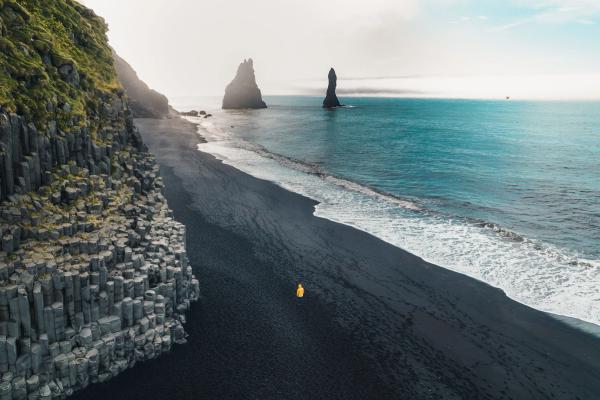
Dyrhólaey Peninsula
This nature reserve has a massive sea arch and offers great coastal views. In summer, it's a top spot for watching puffins.
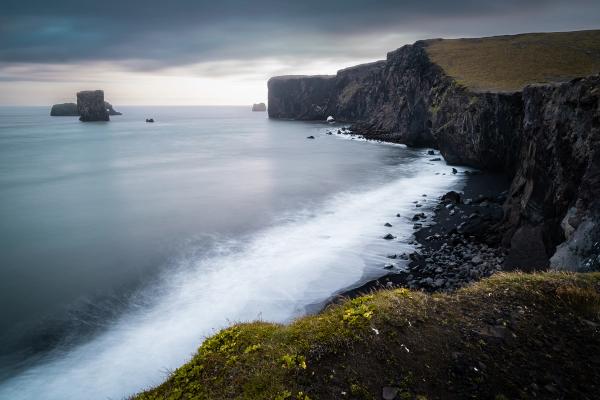
Vík í Mýrdal
The closest town to the plane wreck, Vík has restaurants, hotels, and shops. Its red-roofed church on a hill is a classic Icelandic photo.
Most visitors see these places as part of a South Coast road trip, either as a day trip from Reykjavík or as part of a multi-day journey around the Ring Road heading east. The plane wreck typically takes 1-3 hours of your time, depending on whether you hike or take the shuttle, so it’s easy to combine it with the other attractions nearby.
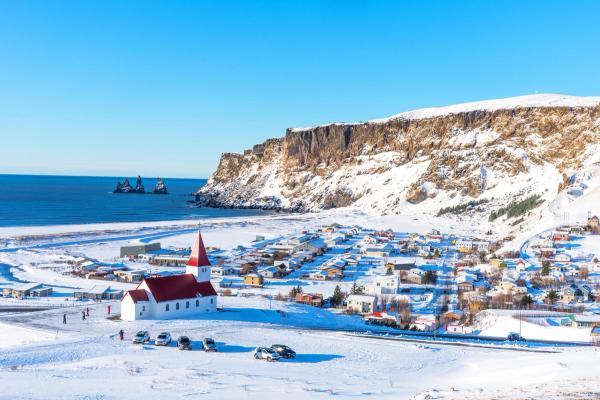
Conclusion
The Solheimasandur Plane Wreck is one of Iceland's most unique sights, a haunting relic that tells a story of survival against the elements. The journey across the black-sand desert is part of the experience, offering a taste of Iceland's raw landscape.
Though more popular in recent years, it still gives a sense of being alone that's hard to find elsewhere.

